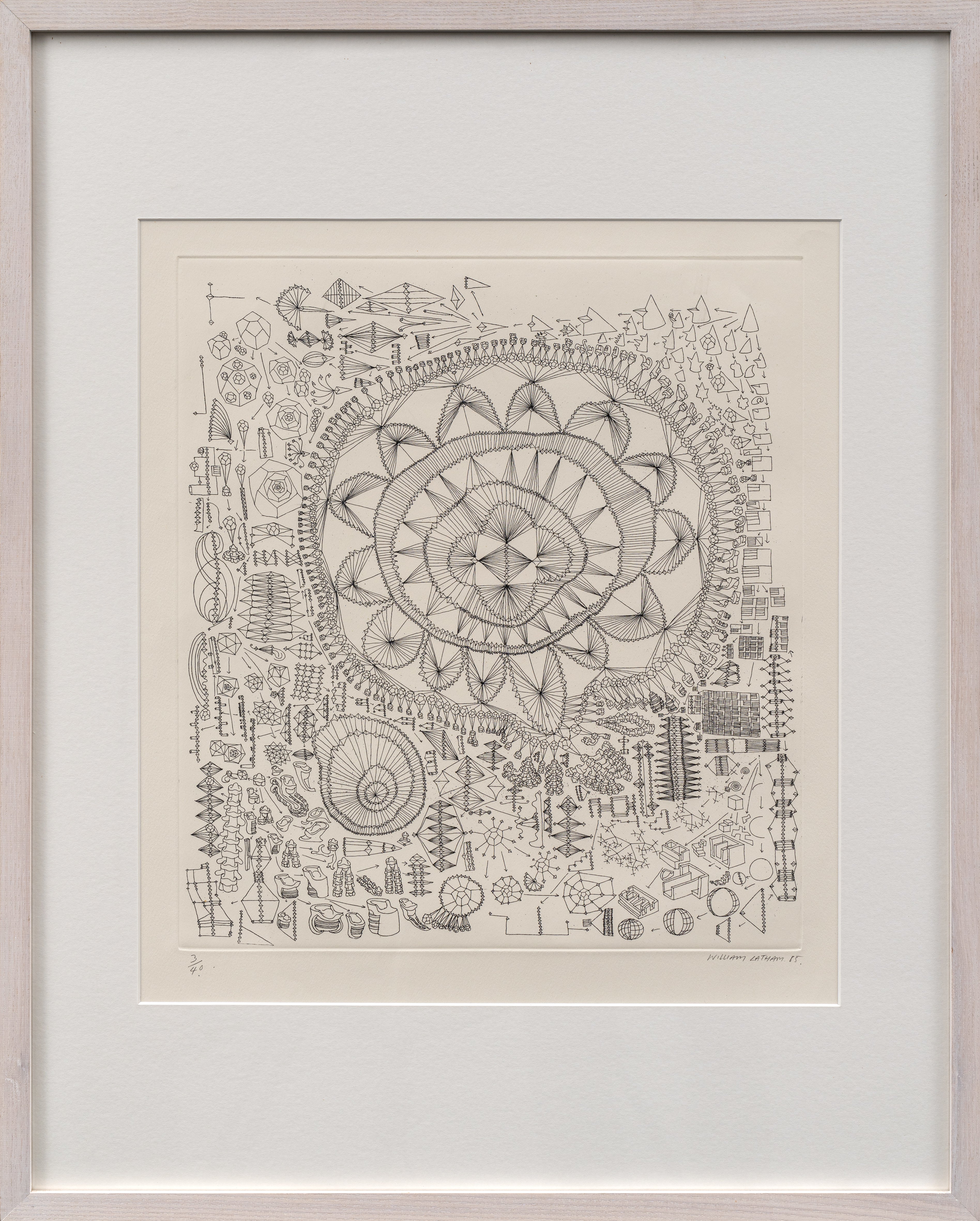Black Crystal, 1985
by William Latham
Etching on paper
65 x 80 cm
25 5/8 x 31 1/2 in
Edition of 40
- Regular price
-
- Sale price
-
$4,510.00
Shipping costs excluded from the price. Please note that we will be in contact with you to arrange shipping and provide shipping costs once the purchase has gone through.
This is another rare FormSynth etching from William’s time as a “Henry Moore Scholar” at the Royal College of Art, when he was heavily influenced by the time he spent at the Natural History Museum observing museum exhibits of natural forms and reading about Darwinian evolution. It shows the evolution of a cone that is subjected to a number of incremental rule-based "shape changing" steps using simple sculptural modifications designed by William known as "Beak", "Bulge", "Scoop" and "Stretch" and other rules. These individual rules harnessed the conceptual idea of a single sculptural action being performed on an imaginary form by the artist such as “taking a scoop out of the form” or “squeezing the form so it bulged out at a particular point”. For example, with the Beak operator the artist imagines a beak-like form being pinched and pulled from the form (which might be, for example, on a cone or another evolved form). The effect of this single action is imagined by the artist and then drawn by the artist adjacent to the ‘parent’ form and then connected by a single arrow showing it’s evolutionary path and so on. The number and order of sculptural modifications could be in many 100s, in effect using the artist’s own mind as a 3D drawing device, so to speak.
In the FormSynth drawings, even though the individual sculptural operators are quite simple, when used cumulatively in different ordering, visually rich and varied forms emerge as new generations are spawned. This etching shows an evolutionary tree of forms derived from a cone with one major "black crystal" mutation, showing multiple simultaneous evolutionary steps dominating the image. All of William’s work from this period reflects his fascination with evolutionary systems and the idea of a new alternative evolutionary system to nature driven by the artist. No traditional Western pictorial composition is used, with the process of evolutionary drawing only stopping only when there is no more space on the sheet to fill. The FormSynth drawings were to form a blueprint for the subsequent Mutator software Art, where the computer drives the evolution together in partnership with the” artist as Gardner”. Here with FormSynth created in a low tech art studio at the Royal College of Art, the artist must rely on their own resources and own drawing ability.
About William Latham
William Latham (b. 1961) is an artist whose pioneering work in computer-generated algorithmic art transformed the boundaries of digital creativity. While a Research Fellow at IBM in the late 1980s and early 1990s, Latham collaborated with mathematician and programmer Stephen Todd to develop the Mutator Evolutionary Art software, a landmark in the ‘artificial life’ branch of AI. Applying evolutionary processes to artmaking originated from Latham’s time as Henry Moore Scholar at the Royal College of Art in the early 1980s, during which he created his FormSynth drawings and etchings. From the mid-1990s Latham pursued projects in the Rave Music scene and developed video game projects, before in 2007 becoming Professor in Computer Art at Goldsmiths University, London. Here he restarted his collaboration with Stephen Todd, and together they resurrected and extended their old Mutator code and pushed the technology into VR, creating immersive experiences which have toured internationally. Most recently Latham has been developing a series of Infinity Mirror monochrome prints which could be described as ‘computer gothic’. Latham’s work is in the permanent collections of The Pompidou Centre, Paris; the Victoria & Albert Museum, London; The Gulbenkian Foundation, London, and The Henry Moore Institute, Leeds. Latham is the curator of the Creative Machine series of group exhibitions, with the most recent iteration opening at Taikang Museum Beijing in November 2024.
Couldn't load pickup availability



